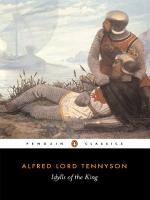|
This section contains 15,922 words (approx. 54 pages at 300 words per page) |

|
SOURCE: "Character and Symbol" and "Symbol and Story," in The Fall of Camelot: A Study of Tennyson's "Idylls of the King," The Belknap Press of Harvard University Press, 1973, pp. 101-33 and 134-44.
In the following chapters from The Fall of Camelot: A Study of Tennyson's "Idylls of the King," Rosenberg examines the dream-images that reinforce the cyclical structure of the Idylls.
Chapter V: Character and Symbol
In his lectures on dreams Freud remarks that "things employed as symbols do not thereby cease to be themselves."1 All of the characters in the Idylls have difficulty in distinguishing between symbols and things, dreams and realities. Alone in her tower, Elaine believes that in possessing Lancelot's shield she possesses Lancelot; a starved symbolist whose waking life no longer nourishes the dream on which she feeds, she dies for a symbol or, in Tennyson's twice-repeated phrase, "lived in fantasy" (LE, 27, 396). Like Arthur...
|
This section contains 15,922 words (approx. 54 pages at 300 words per page) |

|


